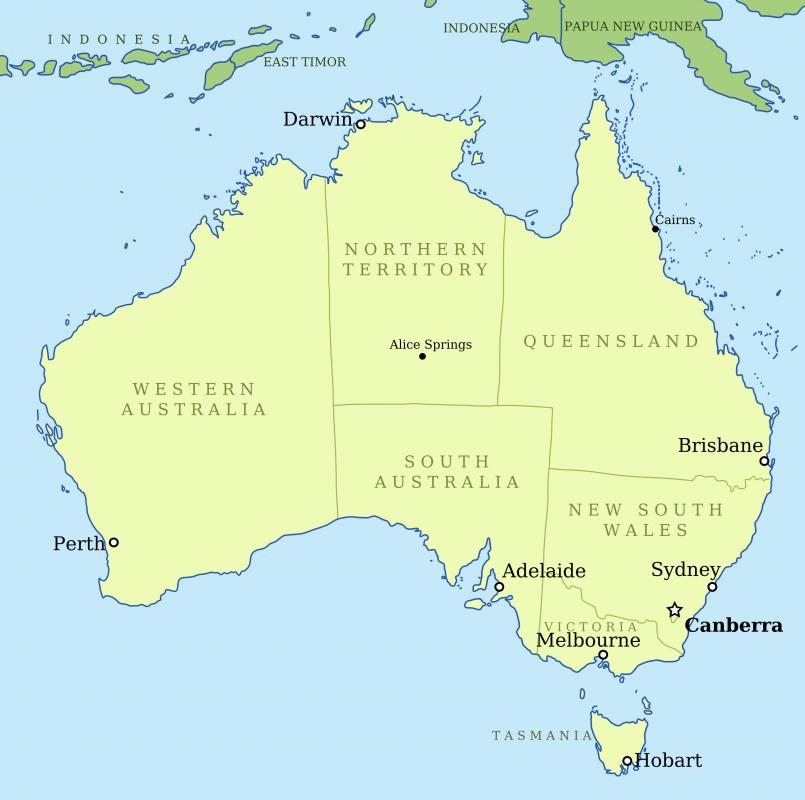At AllThingsNature, we're committed to delivering accurate, trustworthy information. Our expert-authored content is rigorously fact-checked and sourced from credible authorities. Discover how we uphold the highest standards in providing you with reliable knowledge.
What is an Orange Roughy?
The orange roughy is a deep sea dwelling ocean fish found in the South Pacific around Australia and New Zealand. In the 1970s, advanced deep sea fishing techniques made the species accessible to the commercial market, which quickly embraced the delicately flavored, firm fleshed fish. After peaking in the 1980s, fish catches began to decline, and the orange roughy almost vanished from existence before extensive management techniques brought stocks into slow recovery. It is considered to be a severely threatened fish.
Orange roughy can live to be over 100 years old, and weigh approximately 8 pounds (3.6 kilograms) at maturity. The fish are shockingly ugly, and a dull brick red in color when alive that fades to orange after death. They have protruding jaws, foreshortened bodies, and stumpy fins. Like most deep sea dwelling fish, orange roughy take a long time to grow to maturity, and are easy to threaten with overfishing. Extensive deep sea fishing for over two decades resulted in severe depletion of adult stocks. These fish do not generally breed until they reach 30 years of age.

Because of its conservation status, it is recommended that no one consume orange roughy until the fish has had an opportunity to recover from ecologically unsound fishing methods. In addition, like many dense-fleshed fishes, it accumulates a great deal of mercury and should not be eaten by pregnant women and children. Other consumers would be wise to limit their intake to two or three servings a month at maximum.

In addition to having dense white flesh, orange roughy also have copious amounts of oil that can be used in a variety of applications including cosmetics and nutritional supplements. Fisheries for the species have emerged in New Zealand, Australia, and Namibia. The catch peaks in the months of June through August, when the fish are spawning in dense groups.

In addition to depleting the populations of imperfectly understood deep sea fish, commercial drag net fishing is also highly damaging to the marine environment and ocean floor. Trawling disturbs marine sediment, which provides habitat and nutrition to countless species. In addition, numerous fish in addition to the target species are caught in trawling nets and thrown back, usually dead.

Australia and New Zealand have both embarked on conservation programs to preserve the orange roughy, and consumers should purchase fish from these sources if at all. Both programs have enforced quotas, and prosecute illegal harvest of the fish. Scientists are evaluating each fishery for viability and potential fishing potential. A total ban on the fish was pondered in the early part of the 21st century to allow the fish to recover.
Frequently Asked Questions
What is an Orange Roughy?
An Orange Roughy is a deep-sea fish known scientifically as Hoplostethus atlanticus. It's recognized for its bright, brick-red color, which fades to a yellowish-orange after death. This species can live for an exceptionally long time, with some individuals reaching over 150 years of age, making it one of the longest-living marine fish species.
Where can you find Orange Roughy?
Orange Roughy are found in deep, cold waters at depths of 180 to 1,800 meters, primarily in the Western Pacific Ocean, Eastern Atlantic Ocean, Indo-Pacific, and in the Eastern Pacific off Chile. They prefer a habitat on or near seamounts and continental slopes where they can feed on squid and crustaceans.
Why is Orange Roughy considered a controversial choice for consumption?
Orange Roughy has been a controversial choice due to its overfishing and the slow reproductive rate of the species. They don't reach sexual maturity until around 20 to 30 years of age, which, combined with heavy fishing, leads to depleted populations that struggle to recover. Consequently, many organizations advocate for sustainable seafood choices instead.
What does Orange Roughy taste like?
Orange Roughy is prized for its delicate, mild flavor and a firm, white flesh that holds together well during cooking. Its taste is often described as slightly sweet and nutty, making it a popular choice in various culinary dishes. Its versatility allows it to be prepared in many ways, including baking, grilling, and sautéing.
How is Orange Roughy typically caught?
Orange Roughy is typically harvested using bottom trawling methods, which involve dragging a large net across the sea floor. This method is highly efficient but can be ecologically damaging, as it can destroy seafloor habitats and result in bycatch of unintended species, raising environmental concerns about the sustainability of this fishing practice.
Is Orange Roughy a healthy fish to eat?
Orange Roughy is low in fat and a good source of protein, selenium, and vitamin B12. However, due to its long lifespan, it can accumulate high levels of mercury, which can pose health risks if consumed in large amounts, especially for pregnant women and young children. It's advisable to consume it in moderation and heed advisories.
AS FEATURED ON:
AS FEATURED ON:














Discussion Comments
I was just wondering why it's illegal to fish the shores using Talapia as bait?
I'm in Houston, TX, so where or which supermarket I can find to buy the orange roughy fish? Thank you.
Post your comments